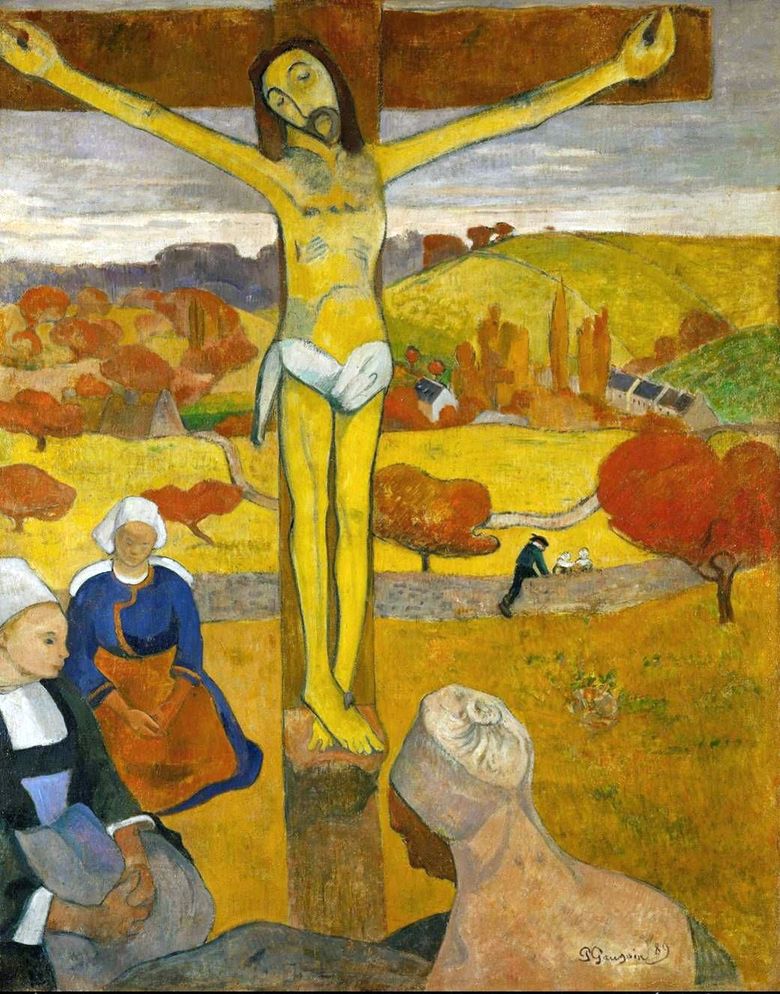
One of the most controversial works of Gauguin. Some see in it a deep philosophical reflection of the painter, while others tend to regard the author as a sacrilegent who corrected religious feelings. There are also those who attribute this work together with such a canvas “The Green Christ” to such a nascent trend as symbolism.
The work was created in Arles, where the artist loved to visit, admiring the countryside. In general, Gauguin was not interested in religious painting, but those few works relating to one degree or another of religion are distinguished by a nontrivial view and innovative embodiment.
Looking at the picture “Yellow Christ”, the first thing that catches your eye is the discrepancy between the heroes who come into conflict with each other within the framework of one story. Crucified on the cross, Christ, whose face expresses that degree of suffering, when everything that is happening seems indifferent, is surrounded by three Breton peasants, calm and somewhat detached. The rural landscape with green fields and working peasants in the vastness brings the scene to the point of absurdity.
As already noted, the presented canvas is treated differently. One of the interpretations says that this picture was a visual attempt of Gauguin to pay attention to the religious problem – society long ago forgot that great sacrifice that Christ brought for the whole of mankind. So the peasant girls sit idly around the cross with a dying martyr, indifferent and apathetic participants in the tragic scene.
Not only the plot was odious in the “Yellow Christ” – Gauguin gives a new interpretation of color. The general color of the picture is yellow, while background and heroes are not only not compared, but also merge with each other. The color itself contradicts what is happening – golden, peaceful, joyful, sunny, it was his painter who chose to create such emotionally complex work.
The famous playwright and writer Octave Mirbo spoke about the picture as a contradictory mixture of Gothic symbols, Catholic feelings, Indian meditation and barbaric solemnity.
 Self-Portrait with the Yellow Christ by Paul Gauguin
Self-Portrait with the Yellow Christ by Paul Gauguin Prayer for the Cup (Christ in the Garden of Gethsemane) by Paul Gauguin
Prayer for the Cup (Christ in the Garden of Gethsemane) by Paul Gauguin Why are you angry? by Paul Gauguin
Why are you angry? by Paul Gauguin Red hat and fruit by Paul Gauguin
Red hat and fruit by Paul Gauguin Scenes of Tahitian life by Paul Gauguin
Scenes of Tahitian life by Paul Gauguin Le Christ jaune – Paul Gauguin
Le Christ jaune – Paul Gauguin Pork herd, Brittany by Paul Gauguin
Pork herd, Brittany by Paul Gauguin Oran Maria (We greet you, Maria) by Paul Gauguin
Oran Maria (We greet you, Maria) by Paul Gauguin